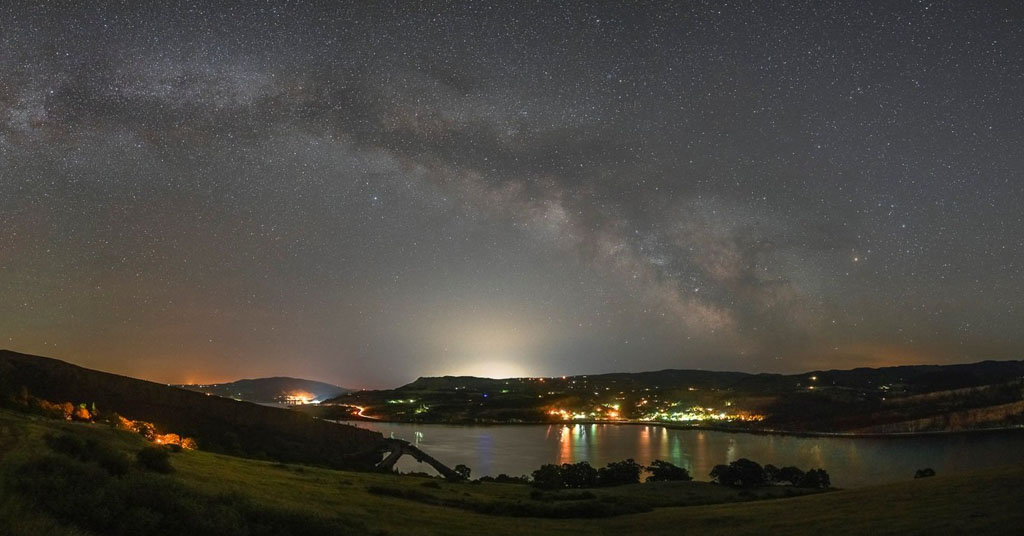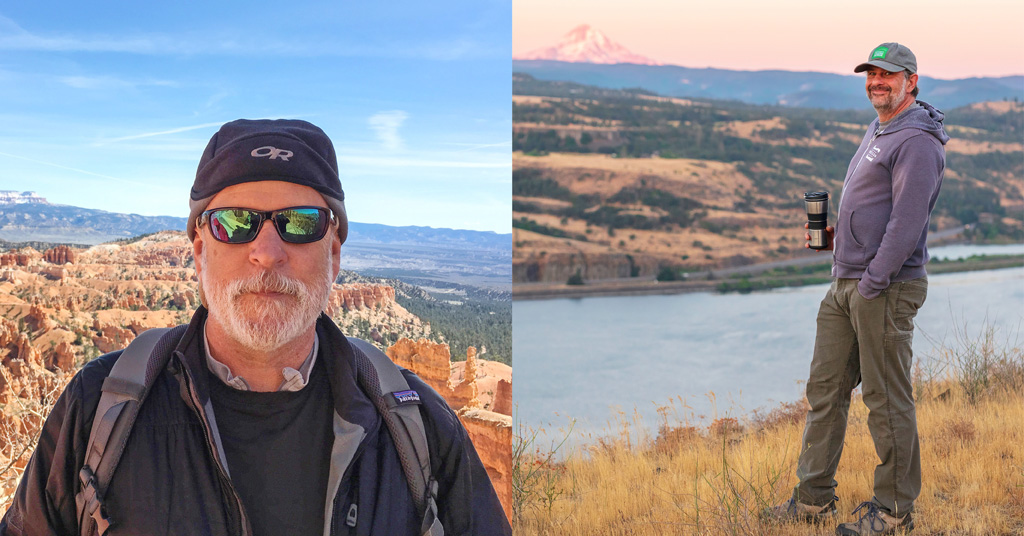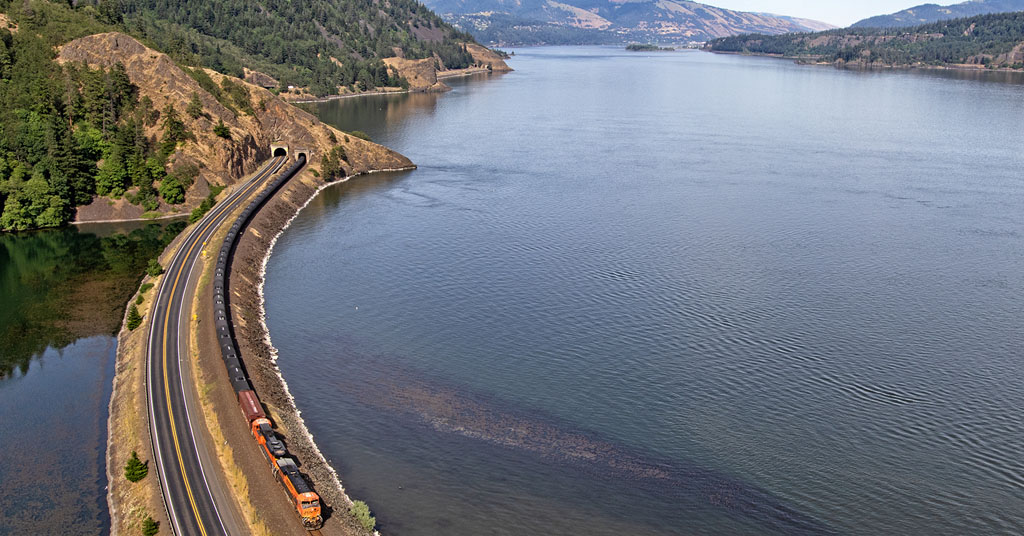By Susanne Wright. July 12, 2016. In the 1990s, the sport of mountain biking exploded into popularity. The Gorge, already primed for recreational use, welcomed mountain bikers to its forested terrain and steep drops: a thrill seeker’s playground waiting to be discovered.
With no sanctioned trail system in place, riders constructed their own web of trails in areas previously unmarked for recreational bike use. How well those trails were constructed and managed depended upon who built them and whether they were on private, county or state lands. Unofficial, user-made trails were often poorly constructed and unmanaged.
In the Columbia River Gorge, a National Scenic Area, the impact on the environment was dramatic. The issue was not whether mountain biking was impacting the environment, but to what extent. Even with good trails, lack of rider education and poor riding technique could quickly deteriorate a trail and the surrounding environment–riding around fallen trees and mud puddles, skidding through fast corners, and short-cutting switchbacks. Even riding features beyond a person’s skill level compromises a good trail.
Mountain bikers embraced the Gorge with such enthusiasm that bike trails now wind along rivers, through deep forests, up dry rocky treeless slopes, and two of the most popular are Post Canyon and Coyote Wall (Syncline).
Post Canyon
By the early 2000s, Hood River County foresters noticed a disturbing trend in the heavily forested land atop Post Canyon Road according to Henry Buckalew, Trail Program Coordinator and Forestry Technician. Mountain bikers had created a system of poorly designed and unsustainable trails. Worse, there was the discovery of structures nailed to trees and tree spiking where a rod or nail is hammered into a tree. Both render trees less valuable for commercial harvesting and a potential cause of mill equipment damage when the tree is processed.
This development was met with alarm as County Forestry lands are active tree farms and an important revenue source for the county. Timber sales contribute anywhere from 25 – 40 percent to the County’s General Fund. Not only are these funds critical to services provided, they offset the county assessed tax rate, keeping it lower than it would be without timber farm revenue.
“Hood River County saw the value of recreation and heard the demands for a trail system for multiple users: equestrians, hikers, and mountain bikers,” said Doug Thiesies, Hood River County Forest Manager. The County Board of Commissioners proactively created a mandate to develop a recreation trail system on Hood River County lands. The mandate came with a priority system for how the tree farm would be used and set as it’s primary purpose: the production and sale of timber.
The County reached out to the National Park Service and other federal, state agencies, local business, and citizen stakeholders to develop a master plan. It took years of dedicated effort to implement the plan and bring together the diverse set of interests. The result is regarded a success for area riders and the ecosystem. Mr. Buckalew believes this trail system within an active tree farm is ‘unique and unusual.’
Volunteers working with County Forestry and its Recreation Trail Committee have been an important component of this success. Mountain bike groups (like HRATS), motorcycle clubs, equestrians, and individuals all played a part.
 [/media-credit]
[/media-credit]
“At the very minimum, the adopter is responsible for keeping the trail clear of fallen trees, overgrown brush, and the maintenance of proper drainage to prevent erosion,” adopter Ben Ketler said. “Though, the real duty of a trail adopter goes beyond just maintenance. The call of the adopter is to improve the trail for the community that so cherishes their experiences in the forest. Since Post Canyon is so close to Hood River, the trail system sees a great deal of people using the trails. This requires dedicated adopters that are motivated to make their trails an amazing experience.”
This collaborative approach is effective, though Mr. Thiesies says there will “always be problems and we will always be trying to catch up.” The trails were intended to be multiple-use, but as the trails’ popularity grew they’ve found that hikers, horses, mountain bikes and motorcycles rarely mix well. To alleviate one conflict, County Forestry is constructing a trail for equestrian use only.
Coyote Wall – Catherine Creek
 [/media-credit]
[/media-credit]
Across the Columbia River in Klickitat County, the Coyote Wall – Catherine Creek Trail System is home to sweeping Columbia River views, rare wildflowers, and sheer basalt cliffs. Mountain bike riders flock to its grassy slopes and oak woodlands. On any given Saturday, trailhead parking can be packed to capacity by mid-morning.
Mountain bike riders first began appearing on the 4,000 acre area in the 1990s. Unrestricted, they constructed sprawling, unregulated trails alongside cow tracks and old jeep road based exclusively on where it was fun to ride. Many of these trails trespassed on private property and tribal lands. As word spread, the area’s popularity increased. By 2002 the Catherine Creek trail system appeared on the cover of Bike Magazine. The increased numbers of diverse users converging along common trails caused contentious disagreements.
Conflicts erupted between faster and more aggressive downhill riders and casual cross-country bikers. Botanical conservation groups argued that unauthorized trails and unleashed dogs endangered the area’s rare wildflower and plant communities and the unique species of animals that relied on the plants for habitat.
Equestrians and hikers sparred with each other and mountain bikers over destruction of sensitive riparian areas, parking space, litter, human waste, and trail use rights. Many private landowners predated the establishment of the Columbia River Gorge National Scenic Area. For them, the sudden onslaught of trespassers was distressing and unwelcome.
In 2007, the U.S. Forest Service attempted to regulate what amounted to recreational anarchy. They reached out to user groups for input. “It was a very complex project with a high level of interest and engagement by our stakeholders,” said Stan Hinatsu, Recreation Staff Officer, U.S. Forest Service, Columbia River Gorge National Scenic Area. “A collaborative group was formed during the process. The group represented adjacent private landowners, mountain bikers, hikers, equestrians, botanist and hunters.”
Issued in 2009, the plan was met with five appeals. The Forest Service withdrew its decision to address disputed issues. Not until 2011 was a final Recreation Plan created, ensuring mountain biking and equestrian use were prohibited in some areas, while allowing multiple use in other areas.
To date, the agency is still in the process of reconstructing and rerouting trails. “As we do, we obliterate some, install erosion control measures, sign, and block entrance to the old trails,” Mr. Hinatsu said. He believes negative environmental impact has lessened since the implementation of a master recreation plan in the area.
 [/media-credit]
[/media-credit]
“I believe most mountain bike riders adhere to current regulations. There have been some new routes developed. It should be noted that mountain bikes are not the only ones creating trails. Hikers do as well,” he said. “Downhill riding is a growing use that needs to be addressed. Dogs off leash by all users are an issue that we are trying to address. Fully implementing the trail plan will resolve most of the impacts we are currently experiencing. Increased Forest Service presence and education would also help.”













Very informative, had no idea this issue existed. Got me thinking these same issues exist is central Oregon as well, like The Bend area.
Thanks, Ron. We think it is a challenge for all the beautiful area, like Bend and the Gorge. How to enjoy a place–hike, bike, fish, hunt, kayak, etc–and leave it as beautiful for the next people who come along and for the animals who need the food and habitat of these places.